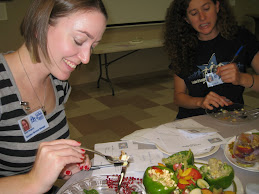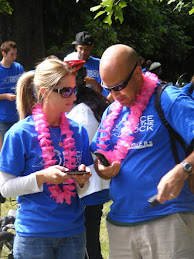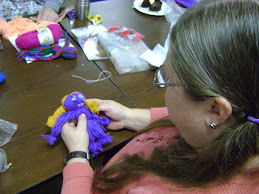Happy 2015! The start of a new year means another chance to
achieve your dream garden! It's time for
a clean slate (and hopefully some compost-enhanced soil) to get your spring crops
off to a glorious start. It's also valuable to reflect upon your garden
experiences from this past year so you know what NOT to do this time
around. Find those crumpled garden
notes where you wrote down all the exciting crop varieties you wanted to grow!
For this blog, I decided to muse about the failures in Demonstration Garden in 2014. Of course,
the garden as a whole was incredibly successful but it's entertaining to
recount some of the lessons learned. From crop failures due
to pests and diseases, painful plant varieties and scary flowers I'm going to
recount the Top 10 Demonstration Garden Bloopers of 2014 (in no particular order).
- The invasion of the harlequin bugs – Fellow gardeners of Sacramento, 2014 was a great year for harlequins, which meant it was a bad year for us. I battled them for my perennial tree kale for months until I realized I could not defeat them. I gave up and pulled the whole patch up in frustration. Only then did I realize I could have cut most of them down to the ground and they would have re-sprouted. Oops! Check out our new, gorgeous (and shorter) patch of tree kale in the garden this year!
- The okra planted in the garden became monstrous and produced a bountiful crop of okra pods. The problem was I never wanted to harvest them because my skin was severely irritated by brushing against the plant. Yes, I could wear long gloves but it's hard to grasp the pods with bulky gloves. I was never excited to squeeze past the okra and I might have been a tad gleeful when I finally pulled it out of the ground. What will I do differently in 2015? Have more help with harvesting!
- A well managed compost pile should be damp and odorless. Poorly managed compost that is rarely turned will cause your volunteers to run away from it. We are often very busy and build our compost piles without turning them regularly (which you should try to do at least every other week). One day a garden volunteer turned a pile and released a stench from the gelatinous mass was shocking, overwhelming and grossly sweet. One of the volunteers had to leave because of the smell. 2015 will be the year of regular compost turnings!
- Everybody loves California poppies, especially me. This is why I planted a dozen around the garden last spring. Unfortunately, not all the flowers bloom on a plant at once, meaning that while the late-bloomers open, the early-bloomers have gone to seed. The most prolific weed in the garden today? California poppies. Who knew that could be a problem? Lesson in 2015 – pull it out before the seed disperses!
- Sadly, we had some loss of life this year. The aquaponics system lost three fish friends to various causes. The two found floating in their tank died of unknown causes. The final fish jumped out of a huge pot off a counter and onto the concrete while I was cleaning his tank. Note to self: put a cover on all containers full of fish.
- I grew some interesting flower varieties this year but perhaps the most infamous was cleome. These spider flowers grew about 4’ tall, had a musky scent and sharp spines on the leaves. They caught of a lot of attention by people taking tours in the Demonstration Garden.
- We grew pole beans that produced beautiful red flowers, but not one bean. At first I thought an animal was eating all of them up but then I realized no living thing could be that efficient. I figured that the plants were too stressed by heat to produce any beans or I got a mysteriously sterile batch. I am going to try different varieties in 2015.
- The cucumbers this summer grew phenomenally. The vines became so overgrown and thick that it was often difficult to find the fruit until it was a foot long. I sampled one of these monsters one day and immediately spit it out because the flesh and seeds were so bitter. The cucumber had decided it was no longer being propagated for consumption and decided to put all its energy into make strong seeds. Pro tip: do not give away or eat foot-long cucumbers.
- Our tomato plants also grew well this summer, and by well I mean they became tomato bushes and obliterated the measly trellis system I erected to hold them up. Given, I should have used wire instead of garden string to hold them up but by the time the strings broke it was too difficult to pull the plants back up or tie string around their branches. We were awash in green leaves but less awash in tomatoes since a majority of the flowers were hidden and didn't get pollinated. This summer – pruning and trellising, oh my!
Submitted by Kate Wilkins, Garden Coordinator at Sacramento Food Bank & Family Services.




































